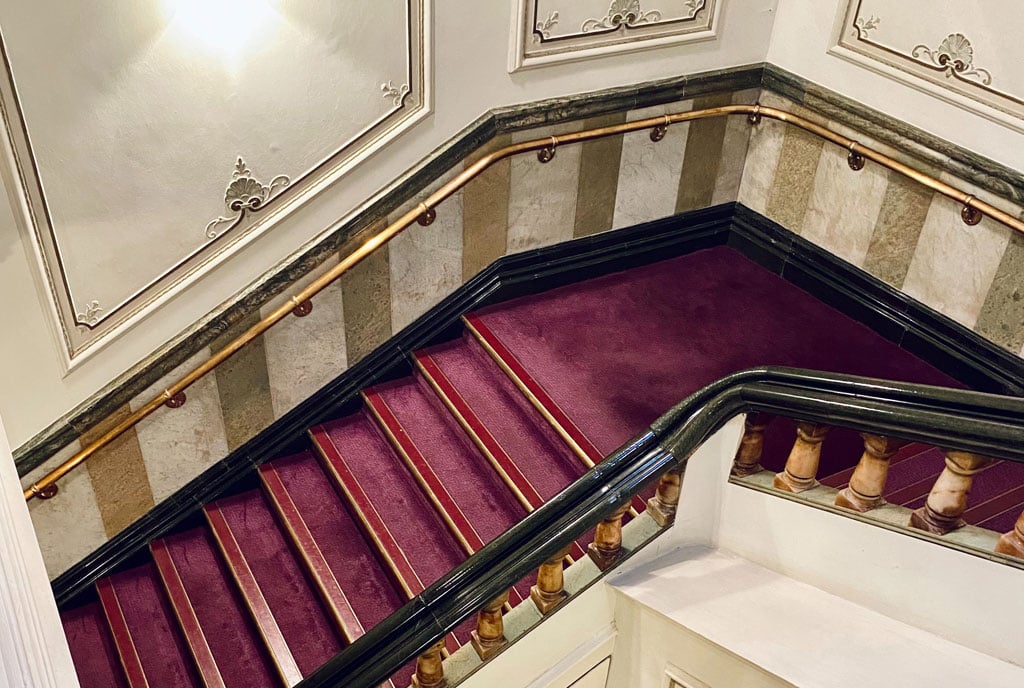When should you use a stair runner

A luxury stair runner provides natural thermal and sound insulation properties and its hardwearing fibres and materials withstand heavy traffic. PHOTO/COURTESY
What you need to know:
- Choosing a stair runner requires careful consideration of several factors including the style and design of the runner, the material it is made from, the size and shape of your staircase, as well as your budget.
Stair runners are a functional way to add personality to your home. Apart from absorbing sound, runners prevent falls and protect wooden stairs from scratches. Picking the right stair runner is as important as how you should you lay it and whether or not you need a professional to install it.
Choosing a stair runner requires careful consideration of several factors including the style and design of the runner, the material it is made from, the size and shape of your staircase, as well as your budget. You will also need to think about the type of padding and installation method that will work best for your needs. Patterns are great, especially if you want your stairs to be a focal point when people enter your home.
When to use a runner
You can use a runner to make your stairs quieter, safer and more stylish. Stair runners especially the thick ones provide grip and cushion making your staircase safer and muffling sounds. With a variety of styles, patterns and materials to choose from, there is a stair runner for every home.
How to choose a good stair runner
A stair runner should be durable, slip-proof and easy to clean. According to annieselke.com runners such as hand-knotted wool, viscose and cotton chenille rugs, might feel soft and cozy underfoot, but can be too delicate under constant traffic. The experts recommend runners made from the following materials:
Micro-hooked wool
Micro-hooked wool runner rugs stand up to repeat foot traffic and vacuuming. While professional cleaning is required for heavier stains, lighter or fresh stains can be blotted up and spot cleaned with your favourite cleaner or a bit of white vinegar.
Though stray loops of yarn may pop up from time to time on micro-hooked wool runners, these can be trimmed to surface level with a pair of sharp scissors.
Woven cotton
Lightweight, easy to clean, and available in a huge range of patterns and colours, woven cotton rugs are ideal for stairs installations. They are featherweight, slender in profile, and have a flexible weave, which makes them easy to wrap tightly around bullnoses and risers.
Woven cotton rugs are also the most affordable option for a stair installation, which often requires two to three runners to complete from landing to landing.
Since steady foot traffic can make lighter-coloured cotton rugs appear worn over time, always opt for patterns with great camouflage factor, such as saturated or multicolour stripes, plaids or geometric patterns.
Woven wool
Tightly woven and extremely durable and long-lasting, woven wool area rugs are a terrific option for the stairs. They can take a beating for years with little sign of wear, are easy to clean and look good as new with regular maintenance. The low profile and lighter weight of woven wool rugs makes them easy to position around stair risers and landings, and simple to staple in place.
Laying a stair runner
Laying a stair runner largely depends on the complexity of the stairs. If you have a straight, L-shaped or U-shaped staircase, you can do it yourself if you are handy with tools. But if your staircase has many twists and turns consider getting a professional to do the job.
There are three basic ways to lay a stair runner. The commonest and decorative option is laying a decorative strip in the middle of staircases, leaving a strip of exposed steps on either side.
Stair treads
The most inexpensive option, because they call for the least amount of material, are stair treads. Stair treads offer similar functionality and benefits as stair runners, except the pieces of carpets are designed to adhere to the individual steps.
Wall-to-wall
This option covers the entirety of each step with full carpeting and is typically used in homes where the entire staircase and landing are covered in the same carpet.
Apart from the material, a good stair runner should fit in with your overall design. For instance consider the current flooring such as rugs, carpets, tiles or hardwood flooring.
A small pattern with a busy design will be trickier to match and a larger block pattern will typically be easier.
Rather than matching the walls and other décor in your home, look for coordinating colours in the same colour family. Consider the pros and cons of choosing light and dark carpeting.
Although lighter carpets can make a room appear larger, whites and light tones show stains and wear faster. Darker colours are best for rugs in high-trafficked areas or for homes with pets or children. Dark carpets hide dirt and spills which can prolong the life of the carpet.
When to replace runners
A general rule of thumb for most runner is around 10 years of regular use but it could be less if the runner has started fading, it is too stained to be cleaned or it is worn out in some places. Typically, wool and broadloom carpets are excellent for busy areas with high foot traffic.
Accessories
To really make your stair runner stand out and look luxurious, go that one step further and decorate it with stair rods. These come in a variety of colours, materials and finishes.
Whether you want steel, aluminium, brass or even wood, stair rods bring that extra touch to complement your interior.
Some flooring and carpet businesses recommend using stair rods to help keep stair runners in place.
Although are stapled in place, any stair rods used with them are purely for aesthetic, decorative detail. It is down to you as the homeowner whether you want that finish or not.




